How to apply decorative plaster?
Decorative plaster - a finishing material that is used indoors, including with high humidity, as well as for facades. Using this product, original textures are created on the surface, some of which are similar to works of art. Such a finish can even be a beginner. The main thing is to know how to apply decorative plaster.
The content of the article
Material requirements
The following requirements are imposed on decorative material:
- vapor permeability - this provides the base with protection against condensation, therefore, under the material there will not be an environment favorable for the occurrence of mold and fungus;
- moisture resistance - this parameter is recommended to be taken into account if a decorative agent is used for plastering the facade or surfaces inside rooms with high humidity (pools, bathrooms);
- ease of application - this is important for DIY enthusiasts;
- color of the product - in this case they are guided by their own preferences, however, it should be borne in mind that some materials give a different tone after solidification;
- price - professionals advise choosing a product of the middle price category, since not everyone can afford too expensive a tool, and it does not always justify such a cost, and too cheap plaster is of poor quality.
Types of decorative products
It is important to know how to apply decorative plaster, the video will be shown below, and which tool to choose. The material has several classification options. By the type of coating formed, such means are distinguished:
- Embossed. They create various irregularities and bulges on a building basis. The main advantage of these products is that you do not need to carefully prepare the surface for them. It is enough to align the base and repair large defects. Small differences and minor flaws, the plaster will correct itself.
- Textured. Such products include mica particles, small pebbles and other fillers that form the original texture on the surface. Under such plaster, thorough surface preparation is also not performed. It is enough to make the base even and without large defects. The material is applied with conventional construction tools. The use of special devices is not required.
- Structural. They are a homogeneous tool. The product is applied to the surface, leveled, and then with the help of special tools create a relief, as in the photo below. To do this, use rollers or various techniques for performing the structure.
- Smooth. Such decorative materials include Venetian plaster. Using the tool on a building basis create an imitation of marble, wood, leather and other textures. The main advantage of the product is its attractive appearance, the disadvantages are the high cost and complexity of application. Fans without the experience of applying decorative plaster are not recommended to use the "Venetian".
Before talking about how to apply decorative plaster, you should first choose the right material. By scope of use, these types of funds are allocated:
- For facades.In this case, it is recommended to use textured materials. The package must bear the mark "for exterior decoration". Only such products can withstand temperature extremes and the negative effects of the environment. Among the facade decorative plasters, “bark beetle” and “fur coat” are distinguished.
- For interior decoration. Any material is suitable here, but it is important to consider where the product will be used. For the bathroom and kitchen, only a moisture-resistant composition is suitable. For dry rooms use any plaster.
Acrylic, silicone, silicate and mineral products are distinguished by composition. The choice of material depends on the type of construction base, the place of completion and budget. Acrylic compounds are considered universal. Such plasters are suitable for any type of surface, for interior and exterior decoration.
Necessary tools
For beginners studying the question of how to apply decorative plaster, and a video on this topic, it is also recommended that you familiarize yourself with what tools will be required during the decoration. To apply the material you need:
- a clean plastic bucket for mixing the solution;
- industrial mixer or drill with mixer nozzle;
- one and a half;
- trowel;
- scraper;
- set of spatulas;
- roller and brush.
Solution preparation
If decorative plaster is used (how to apply - see video below), it is important to properly prepare the product. If a dry mixture is used, then water is added to the product and kneaded with a construction mixer or drill with a mixer nozzle to obtain a homogeneous solution of the consistency of thick sour cream. Product proportions are indicated on the packaging. After this, the product is left for several minutes, no more than 10. Next, the solution is stirred repeatedly and used as intended.
Building foundation preparation
Is it possible to apply decorative plaster on the starting plaster - a common question among fans. Professionals say that such a finish is not only acceptable, but also necessary if there are large drops and deep cracks on the building base. Decorative plaster will not save from significant defects. For this reason, before applying the finishing agent, the surface is plastered.
Pre-building base is freed from the old coating, cleaned of dust, dirt, mold, fungus, greasy and oil stains. Then unreliable fragments of the building base are removed and a primer is applied. Only then do plastering. When the last layer dries, the surface is primed twice and proceed to decoration.
Methods of applying the composition
How to apply decorative plaster depends on what type of decorative coating will be used.
Splashing
The easiest way to decorate the surface, which can be done even by a novice without the experience of plastering. To do this, smooth decorative plaster in one layer is applied to the surface. Next, another agent is sprayed on top of the material with a broom and stick. The broom is immersed in the solution, brought to the surface and hit it with a stick. Splashes of material create an original pattern. To make the decoration look spectacular, it is recommended to make the base and splashes of different shades.
Create a trowel texture
How decorative plaster is applied with a trowel is shown in the video below. First make a coating layer of material. After that, a little money is applied to the trowel and the building base is treated with a tool in a circular motion. This creates an unusual pattern on the surface.
Hatching
To create a picture, smooth or structural plaster and a metal brush are used. The material is placed on the surface and treated with a metal brush in a chaotic manner.After that, the work is suspended for a day. Then the surface is treated with a spatula to get rid of unstable fragments of the plaster.
Surface decoration with a decorative roller
To create a surface with an original pattern, use decorative rollers. The tool is carried out on wet plaster, waiting for the hardening of the product and staining. To create an original drawing, a regular roller is also used, having previously tied the instrument with a rope or wrapped with polyethylene. Such a device is also carried out on stuck, but not frozen plaster. This is one of the easiest ways to decorate a building foundation.
"Sgraffito"
If plaster decorative was used for decoration, how to apply the material with the sgraffito technique - this question arises for some users. For this method of application, it is necessary to divide the white solution into three parts, each painted in a different color. Further, the compositions are sequentially applied to the surface. After that, a pattern is cut out in the upper corner on a stencil. In this form, plaster layers are removed - the original drawing is obtained.
Working with textured plasters
How to apply decorative plaster, the video is shown below to create a texture on the surface? It all depends on the type of coating.
"Fur coat"
To create a "fur coat", the corresponding textured material is thrown onto the surface and distributed over the building base with a spatula. It is recommended to make a thin layer so that the texture looks more profitable. After that, the raw material is faux fur. Thanks to this, the product will acquire the desired texture. After the material has hardened, the surface is covered with acrylic varnish or wax. This will improve the appearance of the finish and extend the operational period.
Bark beetle
For this coating, special bark beetle plaster is used. The material is poured onto the surface and trowel is leveled on a building base from top to bottom. The product includes small pebbles that stretch behind the tool, leaving a mark on the coating. This creates an imitation of wood, eaten by a bark beetle. This texture is not coated with wax or varnish.
Venetian plaster
Instructions for applying Venetian plaster:
- Prepare a solution, divide the product into three parts and mix each with different colors of the color - two light and one dark.
- On a wide spatula, place three parts of the mortar with a narrow spatula.
- Apply material to the surface.
- After setting, level the base with a trowel in a circular motion.
- When the material hardens, apply a coat of primer and varnish or wax.
The video demonstrates the technology of applying decorative plaster.
Knowing how to apply decorative plaster, this is shown in the video, you can create your own decor on the walls of the facade or inside the building. Choose the option you like, however, evaluate your strength correctly, as some coatings require at least minimal decoration experience.
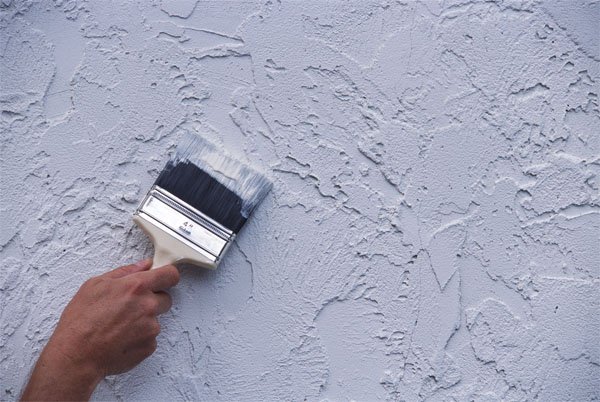
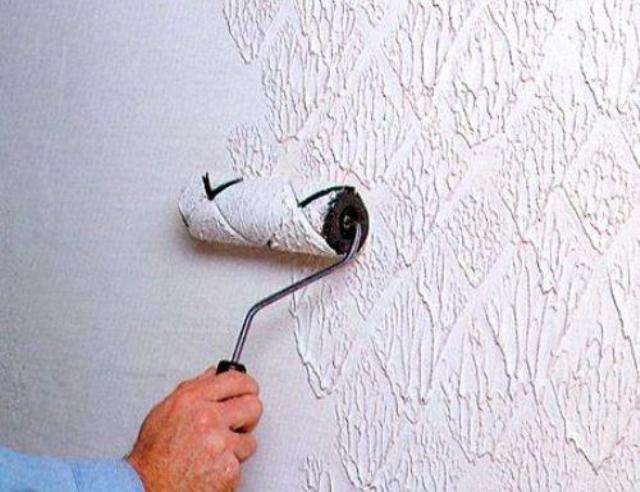
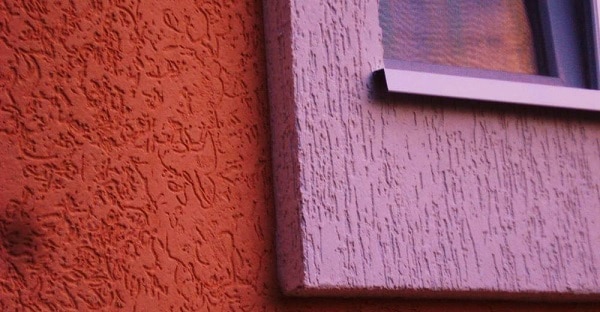
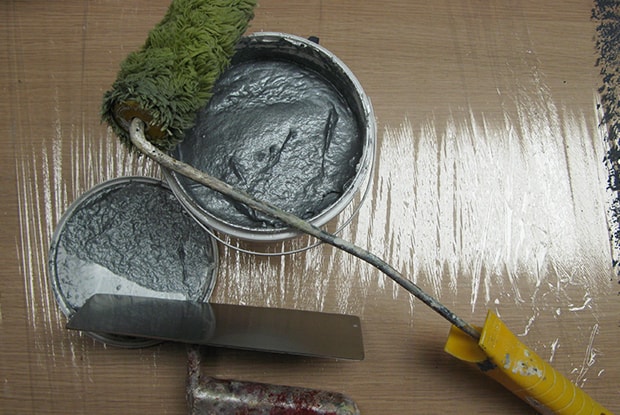
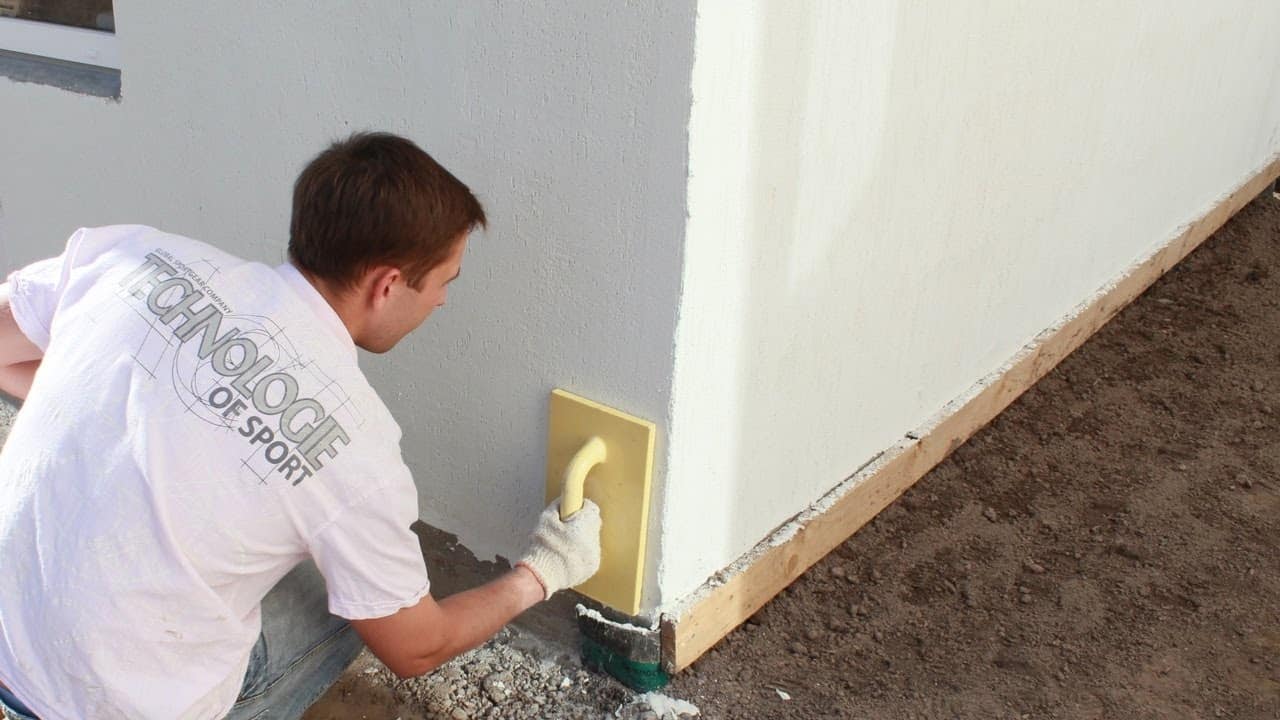
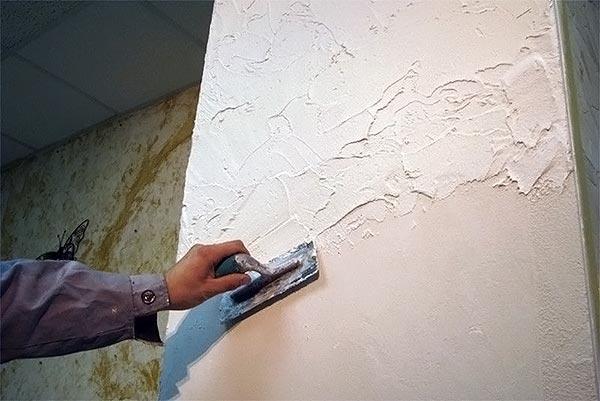
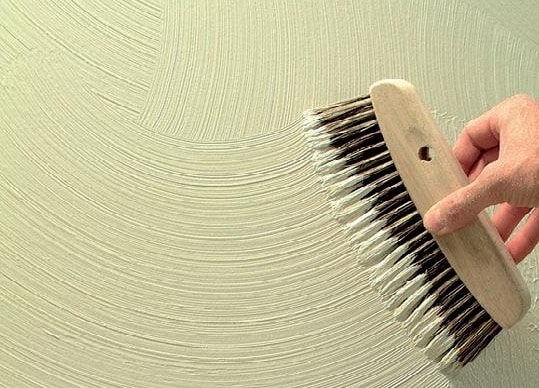


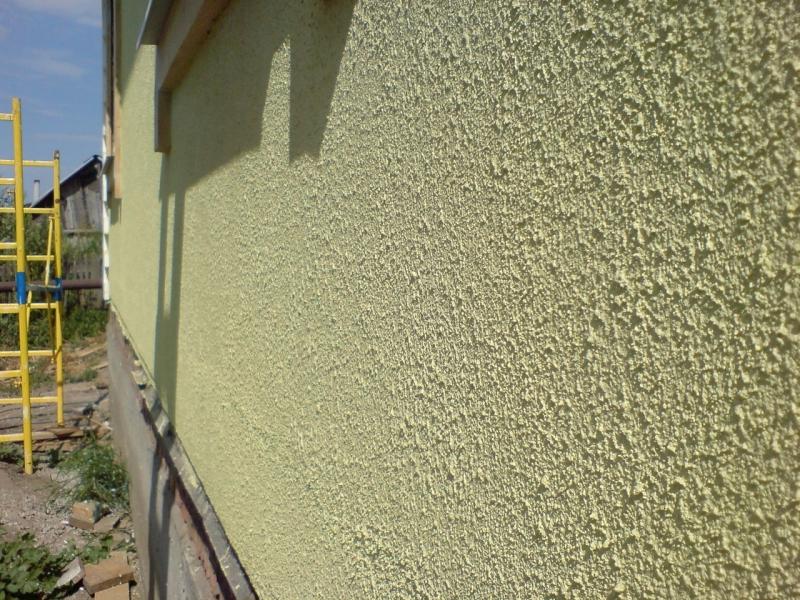
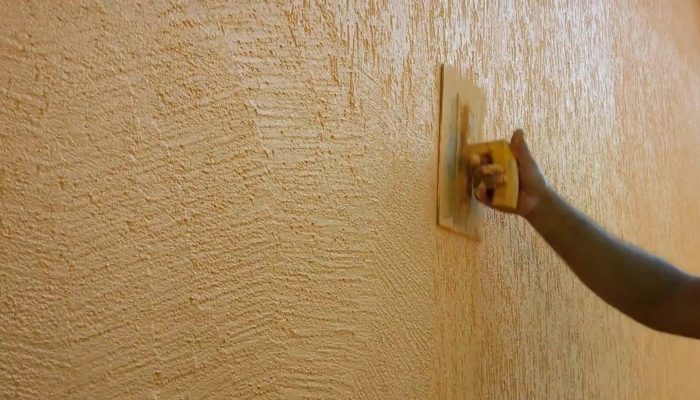

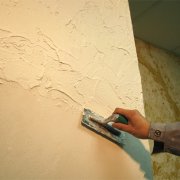
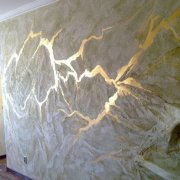
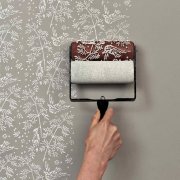
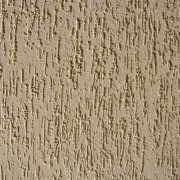
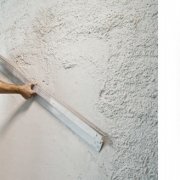
Good job !
The question is: is it possible to restore partially damaged plaster, followed by general painting?
Alexander Sh.